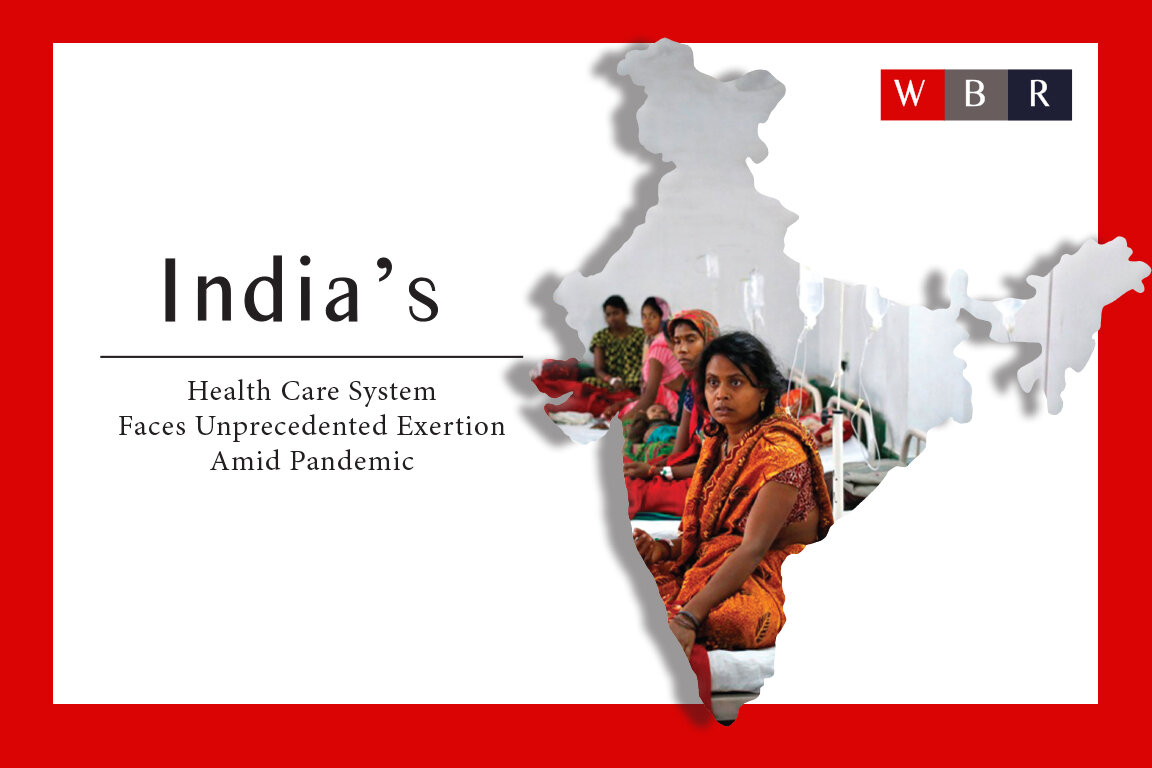India’s Health Care System Faces Unprecedented Exertion Amid Pandemic
As of October 25, 2020, there are 7.9 million cases with 119 thousand deaths and 7.1 million recoveries in India. To control the spread of COVID-19 in the gullies of India, the government had enforced a nation-wide lockdown on March 24 with a continued extension every fortnight until the lockdown was officially partially lifted with a phased “unlock” of the country starting on June 1. According to Frayer (2020), India is on track to beat the United States to be the worst-hit country in terms of daily new cases. This pandemic comes at a time when the economic performance of India is at its lowest point in a decade and there are socio-political mass movements against a discriminatory citizenship bill (Chodankar 2020). This makes us think about the current Hindu Nationalistic Government in power and its capacity to deal with a public health crisis.
The healthcare system in India is largely privately held as almost 87% services are provided by the private sector. In the public healthcare sector, there is an inadequate reach of basic healthcare services, understaffing of medical personnel, quality, and more importantly an insufficient research drive (Sharma 2020). Because of these inadequacies at the public sector level, there is a need for many households to seek care from private providers and thus must pay out-of-pocket. For low-income households, the government initiated the tax-financed National Health Protection Scheme which lets people get cashless secondary and tertiary care at private facilities (Tikkanen, Osborn, Mossialos, Djordjevic, and Wharton 2020). Currently, there is one government doctor for every 10,189 people in India, whilst the WHO recommends a 1:1000 ratio. This ratio differs from state to state because of a shortage of doctors. Also, the number of private sector beds from 2000 to 2010 has grown almost by 70%. This has resulted in 63% of the total share of beds in the country being held by the private sector. There is a lack of infrastructure and system in the public sector for skilled professional onboarding. And this is where the private sector can come into play. But in the light of the pandemic, the contribution and involvement of the private healthcare sector has been suboptimal and initially resistant. According to a statement released by the Jan Swasthya Abhiyan and All India People’s Science Network on April 28th, 2020, the public sector has borne most of the burden of testing and providing medical care to identify and treat positive cases of COVID-19 and that, given the government subsidies and policies that actively promoted the privatisation and commercialization of healthcare, the private sector should have stepped up and contributed. However, instead they were “missing-in-action and of the few private facilities that remained functional, many are profiteering” (Sundaram, Nandi, and Raghunandan 2020). There have been instances where medical attention has been denied to patients who were suspected to be COVID-19 positive and some reports suggest the eviction of such patients from private hospitals. Some hospitals have opened their doors to COVID-19 patients but are overcharging as much as $17 thousand! Some states have attempted to negotiate free COVID-19 care from the private providers, but other states like Delhi have allowed private hospitals to charge on their whims! Under the National Health Protection Scheme, existing packages for pneumonia, respiratory failure, and other conditions may also be used for COVID-19 patients. But according to the latest reports of the National Health Authority, the number of claims under this specific policy have reduced significantly since April which goes to show the disinterest in involvement of the private sector front. This decentralized health care system needs a direction and a framework consistent across states such that no one is denied healthcare based on their socioeconomic status and whether they are COVID-19 positive!
Another aspect to the healthcare system is the supply-chain framework of the pharmaceutical industry. The Indian government had initially restricted the export of about 20 products including protective equipment and antivirals such as Lopinavir and Ritonavir. There has been a fear surrounding the strength of the stockpile of these drugs given that 80-85% of the active ingredients for these drugs come from China, 25% of which come from the Hubei region (the epicenter of the pandemic), and given the current political relations of India and China, it is less likely for this fear to be overturned. Because of this dependence on imports from China and the higher costs India faces in importing these active ingredients from somewhere else, there will be an increase in the price of the drugs in India. Given the mass panic surrounding stockpiling disinfectants and highly priced face coverings, there was a large population of India that was deprived of access to these necessities-turned-luxuries.
The most intriguing part about the observed response and the centralized approach is that according to the Budget 2020 under Modi Government 2.0, the Indian government had plans to boost life science, healthcare, and the pharmaceutical industry by spurring innovation in the generic drug and Active Pharmaceutical Industry sectors and tax deductions for companies that are moving towards the maintenance of electronic health records and health IT systems for the “Digital India” initiative. This reiterates the idea of how flawed the Indian healthcare system is and how this will be impacting other critical health services for newborns to the older population.
Sources
Chodankar, Y. R., (2020), “Coronavirus threat reveals the flaws in India’s health system”, https://theconversation.com/coronavirus-threat-reveals-the-flaws-in-indias-health-system-134272
Frayer, L., (2020), “India On Track To Surpass U.S. As Country Worst Affected By COVID-19”, https://www.npr.org/sections/coronavirus-live-updates/2020/09/17/913475045/india-is-on-track-to-surpass-u-s-as-the-country-worst-affected-by-covid-19
Sharma, A., (2020), “Indian healthcare: The needs and demands”, https://www.expresshealthcare.in/public-health/indian-healthcare-the-needs-and-demands/416037/
Sundaram, T., Nandi, S., Raghunandan, D., N., S., (2020), “Statement on the role of the Private Health Sector during the Covid-19 pandemic: Need for government to bring private and public health sectors under a common command structure”, http://phmindia.org/wp-content/uploads/2020/04/JSA-AIPSN-Statement-on-role-of-private-sector-during-Covid19.pdf
Tikkanen, R., Osborn, R., Mossialos, E., Djordjevic, A., Wharton, G.A., (2020), “India”, https://www.commonwealthfund.org/international-health-policy-center/countries/india

